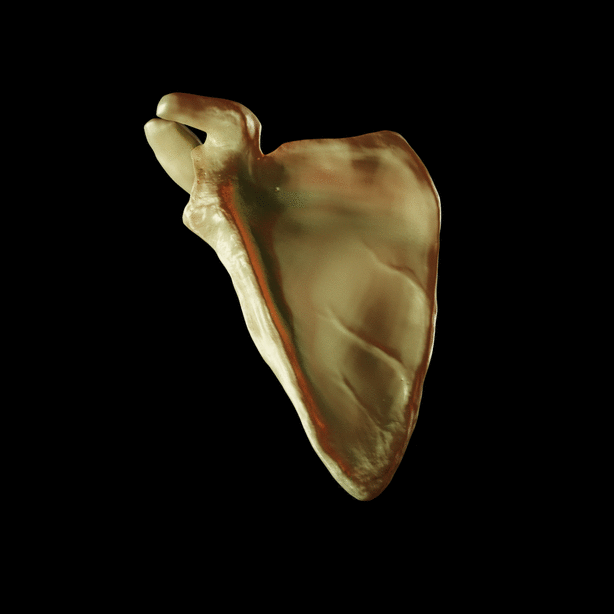What is the function of the scapula bone?
When addressing injuries or pain patterns of the neck and upper back we have to look at the relationship of the scapula to the cervical spine. This structure is important for both movement and stabilization of the neck, upper spine and extremity.
If you are experiencing neck pain, or upper back pain, the scapula could be playing a role. At our chiropractic office, we see slews of patients suffering from pain, where the scapula is at least in part related to their issue.
 The scapula bone derived its name from roman times when they thought it resembled a trowel or small shovel. Known as the wing bone, shoulder blade, or back bone, the scapula connects the humerus (arm bone) to the clavicle to the body. The scapula forms the back of the shoulder girdle or shoulder region. It is a flat bone, triangular in shape, placed on the posterolateral aspect of the thorax or mid back region.
The scapula bone derived its name from roman times when they thought it resembled a trowel or small shovel. Known as the wing bone, shoulder blade, or back bone, the scapula connects the humerus (arm bone) to the clavicle to the body. The scapula forms the back of the shoulder girdle or shoulder region. It is a flat bone, triangular in shape, placed on the posterolateral aspect of the thorax or mid back region.
Your rotator cuff muscles attach to the scapula and allow for rotation both internal and external as well as abduction.
The acronym for the attachment of the rotator cuff muscles to the shoulder is SITS muscles:
- Supraspinatus
- Infraspinatus
- Teres Minor
- Subscapularis
The biceps (flexion of the arm), triceps (extension of the arm) and deltoid (abduction, flexion, and extension) muscles attach to the outer tubercles or prominences of the shoulder and allow for a multitude of movement patterns.
The third and final groups of muscles which provide stabilization as well as play a pivotal role in posture are the trapezius, rhomboid, serratus anterior, and levator scapulae. These are the muscles that are involved in imbalances with upper crossed syndrome or posture related issues.
The scapula is able to perform six unique actions:
- Elevation via the trapezius and levatore scapulae
- Depression from the lower trapezium
- Retraction or adduction via the rhomboids and middle trapezium
- Protraction or abduction from the serratus anterior
- Rotation upwards from the upper and middle trapezium
- Downward rotation from the rhomboids
At the Center for Spine Care and Mobility, we utilize an integrative approach to reset, reinforce and rebuild the way you move. Our method is unmatched by other health care facilities in New York City, and with a collaborative effort, we strive to make sure you receive the best healthcare possible. While most Chiropractors, Physicians and Physical Therapists may keep these modalities separate, or work individually, the Center for Spine Care + Mobility’s objective is to help provide the best integrated treatment.
We accomplish this by first identifying patient needs and then offering them custom solutions. Through years of experience and research, we have determined this is genuinely the greatest way to achieving better health and mobility.
